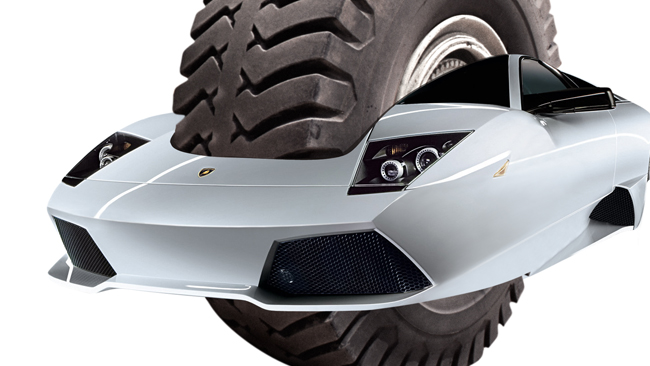FOR TRAVELLING over rough ground, some folks figure that an off-road motorcycle is unbeatable. Plenty more people prefer the stability and comfort of a four-wheel drive. Military transport needs are served even better by six-wheel drives like the Australian-built Perentie and the fabulous Mercedes-Benz Unimog. And some six-wheelers, like the little Argo all-terrain vehicle, won’t even stop at crossing water.American engineer and inventor Charles Taylor, however, was convinced that one wheel was enough.Charles Taylor (1916-1997) hailed from Colorado and spent his early career at International Harvester. The experience gave him a long-standing admiration for the company and for its flexibility in devising tractors and machines for such a large range of applications.It also gave him an idea that would consume all his weekend shed-time for the next 25 years.During WWII, Taylor moved to Hathaway Instruments in Denver, working on aeronautical V-g (velocity and gust) recording instruments. He then spent most of the next two decades at a company called Coors Porcelain, where he developed a still-popular press that created ceramic ball-bearings, used in industrial grinding.Taylor finished his working career in the mid-1970s with a six-year stint at a company called Morse Chain, a long-established maker of roller-chains that had been taken over in 1929 by Borg-Warner. Taylor’s work focused on developing automatic transmissions; indeed, he filed two separate patents for his auto-trans ideas in 1971 and ’73.By then, however, Taylor was already the holder of US patent number 3145797, issued in August 1964 and pertaining to “self-propelled vehicles, and more particularly to vehicles having a single supporting and driving wheel.”Taylor had been working on this since 1939 but, unlike so many US automotive dreamers and flim-flam men, he had the engineering skills and the tenacity to build and continually develop prototypes.Unlike other monowheel whack-jobs, which tend to have the operator sitting within the centre of the wheel, Taylor’s idea pursued a platform with the wheel at the fulcrum (the suspension and braking within it) and the driver and powerplant located at opposite ends of the contraption. The whole thing was self-balancing; think of it as a Flintstones equivalent of the Segway.It drove and steered with the aid of two gyroscopes: one horizontal to take care of the balance, while a vertical one controlled the steering and directional stability. The whole mechanism was electro-mechanical and incorporated a self-regulating balance sensor and a ‘torque reaction control’ to compensate for pitch and dive under acceleration and braking.We think the latter is a sort-of hinged parallelogram device linking the engine to the platform and allowing the wheel to move fore and aft. But to be honest, the whole thing’s way too MacGyver for us.Taylor’s prototypes tended to be low-riding platforms of a fairly agricultural bent, with the driver sitting at the rear, peering over the wheel (and presumably, copping a face-full of road muck while awaiting the invention of the horizontal mudflap.)But his main ambition was for the technology to be used in off-road and agricultural vehicles.“A self-propelled four-wheeled vehicle … requires a reasonably wide cleared path for operation,” Taylor’s patent read. “Thus, such vehicles are not adapted to be driven over mountain trails or rough terrain … While a one-wheeled vehicle certainly cannot negotiate all terrain in the same manner as a four-footed animal or a man, it can be taken over relatively rough terrain and also over trails having sharp turns.”The vehicle that headlines Taylor’s patent drawings was a forward-cabin pick-up truck. It was, unfortunately, incapable of picking-up anything due to its having a bloody great wheel in the middle of the tray. But the one we really like is a nifty little sports job, with something of the feel of a Spitfire cockpit and tailplane to it.





